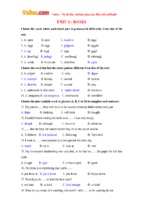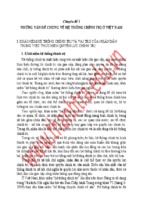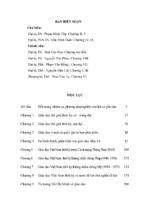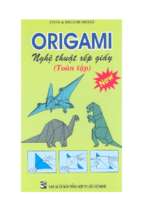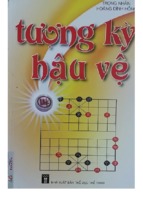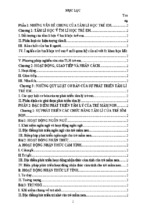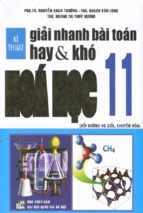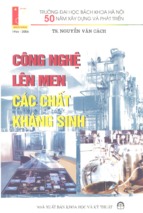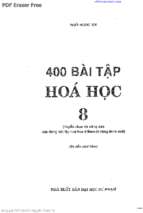See discussions, stats, and author profiles for this publication at: http://www.researchgate.net/publication/260122490
Sulphur dioxide fumigation effects on stomatal
density and index of non-resistant plants:
implications for the stomatal palaeo-[CO2]
proxy method.
ARTICLE in REVIEW OF PALAEOBOTANY AND PALYNOLOGY · JANUARY 2012
Impact Factor: 1.94
CITATIONS
READS
3
57
3 AUTHORS:
Matthew Haworth
Caroline Elliott-Kingston
Italian National Research Council
University College Dublin
23 PUBLICATIONS 395 CITATIONS
8 PUBLICATIONS 88 CITATIONS
SEE PROFILE
SEE PROFILE
Jennifer C Mcelwain
University College Dublin
93 PUBLICATIONS 2,262 CITATIONS
SEE PROFILE
All in-text references underlined in blue are linked to publications on ResearchGate,
letting you access and read them immediately.
Available from: Matthew Haworth
Retrieved on: 09 November 2015
Review of Palaeobotany and Palynology 182 (2012) 44–54
Contents lists available at SciVerse ScienceDirect
Review of Palaeobotany and Palynology
journal homepage: www.elsevier.com/locate/revpalbo
Research paper
Sulphur dioxide fumigation effects on stomatal density and index of non-resistant
plants: Implications for the stomatal palaeo-[CO2] proxy method
Matthew Haworth a,⁎, Caroline Elliott-Kingston b, Angela Gallagher c,
Annmarie Fitzgerald b, Jennifer C. McElwain b
a
b
c
CNR – Istituto di Biometeorologia (IBIMET), Via Giovanni Caproni 8, 50145 Firenze Italy
School of Biology and Environmental Science, University College Dublin, Belfield, Dublin 4, Ireland
Department of Hydrology and Geo-environmental Sciences, Vrije Universiteit, De Boelelaan 1085–1087, 1081 HV Amsterdam, The Netherlands
a r t i c l e
i n f o
Article history:
Received 19 March 2012
Received in revised form 23 June 2012
Accepted 25 June 2012
Available online 4 July 2012
Keywords:
stomata
palaeo-[CO2]
sulphur dioxide
Triassic
Jurassic Boundary
Ginkgo Araucaria
a b s t r a c t
The inverse relationship between the number of stomata on the surface of a leaf and the atmospheric concentration of carbon dioxide ([CO2]) in which it developed permits the use of fossil plants as indicators of
palaeo-atmospheric [CO2] level (palaeo-[CO2]). This “stomatal method” to reconstruct palaeo-[CO2] is dependant
upon stomatal initiation being determined by [CO2]. However, global perturbations to the carbon cycle and climate system throughout earth history are not only characterised by fluctuations in the level of atmospheric
[CO2], but also by the release of large volumes of toxic gases such as sulphur dioxide (SO2) into the atmosphere.
Recent studies have raised uncertainties into the efficacy of stomatal palaeo-[CO2] proxies during episodes of SO2
fumigation. This study aims to assess the effect of exposure to 0.2 ppm SO2 on the stomatal frequencies of plant
species with no evolutionarily acquired resistance to toxic gases in comparison to individuals grown under control conditions and atmospheres of elevated [CO2]. Fumigation with SO2 resulted in a general pattern of increased
stomatal density (SD) values, but induced variability in the stomatal index (SI) responses of the plant species
studied. Ginkgo biloba exhibited an increase in SI, whereas the araucariacean conifers Agathis australis and Araucaria
bidwillii displayed reductions in SI that were indistinguishable from values observed under [CO2] enrichment. These
results suggest that the presence of atmospheric SO2 may reduce the effectiveness of stomatal reconstructions of
palaeo-[CO2] during intervals characterised by the release of large volumes of toxic gases into the atmosphere. However, exposure to SO2 induced significant increases in the SD/SI ratios of six of the seven species studied. Calculation
of the SD/SI ratios of fossil plants may identify any stratigraphic horizons where the stomatal initiation responses of
the fossil flora were affected by sudden fumigation with toxic gases, and thus influence palaeo-[CO2] estimates.
Therefore the SD/SI ratios of fossil plants may serve as indicators of the effectiveness of stomatal reconstructions
of palaeo-[CO2].
© 2012 Elsevier B.V. All rights reserved.
1. Introduction
The stomatal frequencies of fossil plants are increasingly being used
as indicators of relative changes in palaeo-atmospheric levels of carbon
dioxide (palaeo-[CO2]) through earth history (eg. Kürschner et al.,
1996; Wagner et al., 1999; Kouwenberg et al., 2005; Self et al., 2006;
Passalia, 2009; Beerling and Royer, 2011; Doria et al., 2011; Grein et
al., 2011; Stults et al., 2011). The density of stomata on a leaf surface
often reflects the atmospheric carbon dioxide concentration ([CO2])
during leaf development. This “snap-shot” of [CO2] permits the stomatal
frequencies of fossil plants to reconstruct palaeo-[CO2] at a higher
⁎ Corresponding author. Tel.: +39 0553033711; fax: +39 055308910.
E-mail addresses:
[email protected] (M. Haworth),
[email protected] (C. Elliott-Kingston),
[email protected]
(A. Gallagher), annmarie.fi
[email protected] (A. Fitzgerald),
[email protected] (J.C. McElwain).
0034-6667/$ – see front matter © 2012 Elsevier B.V. All rights reserved.
doi:10.1016/j.revpalbo.2012.06.006
temporal resolution than other proxy methods (Beerling and Royer,
2002a,b; McElwain et al., 2002; Wagner et al., 2002; Haworth et al.,
2005; Kouwenberg et al., 2005; Smith et al., 2010). This high temporal
resolution is crucial to our understanding of geologically sudden perturbations to the environment and global carbon cycle that are commonly
observed at mass extinction and ocean anoxic events (eg. Hesselbo
et al., 2000; Beerling and Berner, 2002; Jenkyns, 2003; Hesselbo
et al., 2007; Ruhl et al., 2009; Arango-Velez et al., 2011; Bacon et al.,
2011; Ruhl and Kürschner, 2011; Schaller et al., 2011; Hermoso et al.,
2012; Zeppel et al., 2012). These perturbations to the carbon cycle are
marked by pronounced fluctuations in atmospheric [CO2] that are
recorded in the stomatal numbers of fossil plants growing at the time
(eg. McElwain et al., 1999; Beerling et al., 2002; McElwain et al., 2005;
Lamarque et al., 2007; Bonis et al., 2010; Smith et al., 2010; Retallack
et al., 2011; Steinthorsdottir et al., 2011). However, many of these extinction and ocean anoxic events are also characterised by the sudden
release of large volumes of toxic gases such as sulphur dioxide (SO2)
M. Haworth et al. / Review of Palaeobotany and Palynology 182 (2012) 44–54
and hydrogen sulphide (H2S) into the atmosphere from global scale volcanism and ocean euxina (Beerling and Berner, 2002; McHone, 2003;
Grice et al., 2005; Kump et al., 2005; Self et al., 2006; Hori et al.,
2007). It is therefore of great importance to understand the effect of
toxic atmospheric gases on stomatal initiation to constrain and refine
stomatal-based reconstructions of palaeo-[CO2] at these key intervals
in earth history, which are crucial to our understanding and prediction
of biodiversity and environmental responses to current rising [CO2]
(Tanner et al., 2007; Haworth et al., 2010a).
Stomatal frequency can be measured as stomatal density (SD:
the number of stomata per mm 2), or as a ratio of the number of stomata to epidermal cells known as the stomatal index (SI) (Poole
and Kürschner, 1999). The SI negates the effect leaf expansion may
have on SD, however SI may still be positively influenced by light
intensity (Kürschner, 1997; Kouwenberg et al., 2007; Casson et al.,
2009). Many plant species exhibit similar proportional SD and SI reductions that serve to enhance plant water use efficiency in response
to an increase in atmospheric [CO2] (Woodward, 1987; Kürschner et
al., 1997; Beerling et al., 1998; Haworth et al., 2010b, 2011). Exposure
to SO2 can induce a reduction in leaf expansion during development
(Cowling and Koziol, 1978; Garsed et al., 1979; Saxe, 1983) due to
impairment of photosynthesis (Zeigler, 1972) and leaf water relations
(Black and Unsworth, 1979; Neighbour et al., 1988). Any decrease
in leaf expansion following exposure to toxic atmospheric gases
may therefore result in an increase in SD. Stomata are the site of
entry for approximately 90% of atmospheric pollutants into the leaf
(Unsworth and Black, 1981), it may therefore be expected that exposure to toxic gases might result in a change in stomatal number or
conductance in order to reduce entry of these gases into the internal
leaf (Mansfield and Majernik, 1970; Mansfield, 1973; Ayazloo et al.,
1982; Ali et al., 2008).
At present a consistent effect of fumigation with toxic atmospheric
gases on SD and SI is not evident (Ayazloo et al., 1982; Bettarini et al.,
1997; Tanner et al., 2007; Ali et al., 2008; Haworth et al., 2010a). Exposure to elevated levels of atmospheric [CO2] and [SO2] in isolation
and combination have been proposed to induce a reduction in SI in
the fern Nephrolepis exaltata collected from sites around the Kilauea
volcano, Hawaii (Tanner et al., 2007). The legume Psoralea corylifolia
exposed to episodic fumigation with SO2 from industrial emissions
also displayed a reduction in SD (Ali et al., 2008). Higher stomatal resistance was found to confer greater tolerance to SO2 in the grasses
Lolium perenne, Festuca rubra, Dactylis glomerata and Holcus lanatus,
however this enhanced tolerance to fumigation with SO2 was not
associated with reduced SD (Ayazloo et al., 1982). Reduced SD is
also not associated with enhanced SO2 resistance in the Cucurbits
Curcurbita pepo and Cucumis sativus (Bressan et al., 1978). The rush
Scirpus lacustris and grass Agrostis canina collected from Italian volcanic degassing vents are resistant to fumigation with sulphurous gases,
and exhibited no effects on stomatal number when exposed to H2S
and SO2 respectively in controlled environment studies (Bettarini et
al., 1997; Haworth et al., 2010a). This divergence in reported stomatal
density and index responses to fumigation with SO2 may be the result
of: 1) duration of exposure to the toxic gas (whether exposure is
episodic or persistent); 2) the concentration of the toxic gas; 3) the
level of SO2 resistance of the plant species, and; 4) differences in the
functionality of stomata between different individuals and species
(i.e. speed/tightness of stomatal closure) (Mansfield et al., 1988;
Neighbour et al., 1988; Wellburn, 1994; Haworth et al., 2010a). It is
these uncertainties that need to be resolved to fully understand the
influence of toxic atmospheric gases on stomatal initiation over geological timescales.
Plant species from volcanic degassing vents commonly grow in
atmospheres enriched in [CO2], but are also exposed to toxic gases
such as SO2 and H2S (Miglietta et al., 1993; Fordham et al., 1997;
Raschi et al., 1997; Paoletti et al., 2005; Onoda et al., 2009). This constant
exposure to toxic gases has led to the development of genetically
45
isolated populations resistant to fumigation with toxic gases through
the exclusion of vulnerable genotypes over multiple generations
(McNeilly, 1968; Ayazloo and Bell, 1981; Haworth et al., 2010a). Fumigation with H2S and SO2 has been shown not to affect stomatal initiation
in resistant genotypes (Bettarini et al., 1997; Haworth et al., 2010a). This
may suggest that those fossil plants exposed to chronic and persistent
fumigation with toxic gases across multiple generations, such as those
conditions experienced over geological timescales during the formation
of large igneous provinces (LIPs) (Knight et al., 2004; Marzoli et al.,
2004; Nomade et al., 2007; Van de Schootbrugge et al., 2009), will
have experienced selection pressures favouring resistance and are unlikely to record any influence of these toxic gases in stomatal initiation
(Haworth et al., 2010a). The development of resistance within a population caused by the selective pressures exerted by fumigation with
toxic industrial gases has occurred within 200 years in Lolium perenne
in Lancashire, UK (Bell and Mudd, 1976).
However, stomatal initiation in non-resistant vegetation may still
be affected by sudden or instantaneous fumigation with toxic sulphurous gases; possibly caused by a rapid increase in volcanic activity
(Hames et al., 2000; Knight et al., 2004; Schaller et al., 2011), a shift
in meteorological conditions bringing vegetation into contact with
toxic gases (Grattan and Sadler, 1999; Hantemirov et al., 2000) or
emission of toxic gases from ocean euxina (Grice et al., 2005; Kump
et al., 2005). The natural fumigation of non-resistant vegetation with
toxic gases may reduce the efficacy of high temporal resolution stomatal reconstructions of palaeo-[CO2] through these events (eg. McElwain
et al., 1999; Beerling et al., 2002; McElwain et al., 2005; Lamarque
et al., 2007; Bonis et al., 2010; Retallack et al., 2011; Steinthorsdottir
et al., 2011). Sulphur dioxide and H2S form a major component of
volcanogenic gases, and may even be emitted in larger volumes than
CO2, with H2S rapidly oxidising in the atmosphere to form SO2 (Brown,
1982). It has been proposed that fumigation with SO2 may induce a reduction in stomatal initiation in developing leaves (Tanner et al., 2007)
due to stomatal closure causing an increase in internal levels of [CO2]
within the leaf (Unsworth and Black, 1981; Mansfield et al., 1988),
thus inducing a systemic signal affecting stomatal initiation in developing leaves (Lake et al., 2001; Shimada et al., 2011). It is therefore of critical importance to understand the stomatal density and index responses
of living plants with no evolutionarily acquired resistance to toxic gases
to fumigation with SO2, and the potential impacts upon stomatal reconstructions of palaeo-[CO2]. This study aimed to grow relict plant species
with ancient evolutionary histories in controlled environment conditions of elevated [CO2] and fumigation with SO2 in order to assess the effects of fumigation with SO2 on stomatal initiation, and the likely impacts
on stomatal reconstructions of palaeo-[CO2] coinciding with sudden or
instantaneous natural fumigation with toxic volcanic gases. Potential
mechanisms to account for any effects of toxic volcanic gases on SD
and SI values of fossil plants over geological timescales are also explored.
2. Methods and materials
2.1. Controlled environment conditions and photosynthetic analyses
The cycads Lepidozamia hopei and Lepidozamia peroffskyana grown
from seed, six month-old specimens of the fern Osmunda regalis and
two year-old specimens of gymnosperms Ginkgo biloba, Nageia nagi,
Podocarpus macrophyllus, Araucaria bidwillii, and Aagathis australis
were potted in 4 l square pots (15 × 15 × 23 cm) with 80% compost
(2 kg m −3 15–10–20 N:P:K; Bord na Móna, Newbridge, County
Kildare, Ireland), 20% vermiculite and 2.5 g l −1 slow release
Osmocote fertilizer (15% N, 10% P2O5, 10% K2O, 2% MgO, plus trace
elements; Scotts Co., Marysville, Ohio, USA). Plants were grown for
12 months in Conviron BDW-40 (Winnipeg, Manitoba, Canada)
growth rooms in the Program for Experimental Atmospheres and
Climate facility at Thornfield, under control atmospheric conditions
(380 ppm CO2, no SO2), elevated [CO2] (1500 ppm CO2, no SO2) and
46
M. Haworth et al. / Review of Palaeobotany and Palynology 182 (2012) 44–54
fumigation with SO2 (380 ppm CO2, 0.2 ppm SO2). Atmospheric
concentration of CO2 within the chambers was monitored by a
PP-systems WMA-4 IRGA (PP-systems, Amesbury, MA, USA) and
supplemented by compressed CO2 to increase [CO2] (BOC, Guildford,
Surrey, UK). Sulphur dioxide fumigation was achieved by supplementing the chamber with compressed SO2 (BOC) to a concentration of 0.2 ppm. Atmospheric SO2 concentration was monitored
by a Horriba APSA-370 Air Pollution Monitor (HORIBA Instruments
Ltd, Northampton, UK). All other growth conditions remained constant, with plants experiencing 16 h of light per day in a simulated
day/night program (5.00–6.00 dawn; 6.00–9.00 light intensity rises
from 300 to 600 μmol m −2 s −1; 9.00–17.00 midday light intensity
of 600 μmol m −2 s −1; 17.00–20.00 light intensity decreases 600 to
300 μmol m −2 s −1; 20.00–21.00 dusk), temperature regime (night
time temperature of 18 °C rising to a midday peak of 28 °C), relative
humidity of 80%, downward ventilation to ensure mixing of atmospheric gases and receiving 60 ml of water each day. In order to
avoid mutual shading plants were randomised within areas of identical canopy height within the growth chambers (Hammer and Hopper,
1997; Sager and McFarlane, 1997).
Chlorophyll-fluorescence measurements of plant photosynthetic
performance were taken using a Hansatech PEA Fluorometer following 30 min of dark adaptation using a Hansatech dark adaptation
leaf clip between 08.00 and 11.00 am on new leaf growth of a minimum of three plants in the control and SO2 fumigation growth chambers. Chlorophyll-fluorescence measurements provide an indication
of the efficiency of Photosystem II (Fv/Fm); as expressed by the ratio
of variable fluorescence (Fv) to the fluorescence maximum (Fm),
where a ratio of 0.83 indicates a healthy plant, and values less than
0.83 suggest impairment of photosynthetic performance (Maxwell
and Johnson, 2000). The number of dead reaction centres in Photosystem II (Fo/Fm) provides an indication of damage to the photosynthetic
physiology and is calculated as the ratio the minimum fluorescence
yield (Fo) to the Fm (Butler and Kitajima, 1975a, 1975b).
In order to explore possible selective pressures experienced by
non-resistant plants exposed to fumigation with SO2 during Earth
history, plant species grown under glasshouse conditions of ambient
[CO2] were selected (~ 400 ppm) with relatively high (Osmunda
regalis: 247.5 ± 14.7 mmol m −2 s −1) and low (Ginkgo biloba: 18.0 ±
2.4 mmol m −2 s −1) stomatal conductance rates. These were then
placed into the SO2 chamber (three replicates were used following
two weeks acclimation to growth chamber conditions in the control
chamber), and photosynthetic parameters recorded with increasing
duration of exposure. Leaves were labelled using string treasury tags
to permit the same leaf to be consistently sampled for chlorophyllfluorescence analysis. Analysis of photosynthetic physiology (photosynthetic light response and photosynthesis–internal leaf [CO2] curves) was performed using a PP-Systems Ciras-2 attached to a PLC6(U)
leaf cuvette and LED light unit (PP-Systems, Amesbury, Massachusetts,
USA) following the methods of Long and Bernacchi (2003). Photosynthetic light response curves allow the analysis of light use for
photosynthesis in order to calculate the light compensation and saturation points and the apparent quantum efficiency. Photosynthetic rate–
internal [CO2] curves permit calculation of the [CO2] compensation
point, the efficiency of carbon uptake (Vcmax: carboxylation efficiency
of ribulose-1,5-bisphosphate carboxylase-oxygenase), maximum electron transport (Jmax) and maximum rate of photosynthesis (Amax)
(Long et al., 1996; Long and Bernacchi, 2003). Due to the toxic effect
of the SO2 damaging the foliage of O. regalis it was not possible to collect
photosynthetic measurements from the fern. However, analysis was
conducted on the same leaf of G. biloba for two weeks, until fissures
appeared in the leaf making it impossible to produce a good seal between the leaf and the gaskets in the cuvette, or to discount the possibility of water vapour leaking from these areas of damage that would
affect the infra-red gas analyser and calculations of photosynthesis
and stomatal conductance (i.e. Long and Bernacchi, 2003).
2.2. Stomatal counts
After full leaf development and expansion of new leaf growth
under the atmospheric conditions, the uppermost leaves receiving
full irradiance and not affected by self-shading were destructively
sampled for stomatal counts. No new growth occurred in Osmunda
regalis when grown under fumigation with SO2. Leaf cuticles were
macerated using a 50:50 solution of glacial acetic acid and 30% H2O2
at 70 °C, stained using safranin-O solution and mounted in glycerol
on glass slides. Cuticle images were taken under transmitted light
using a Leica DM2500 microscope attached to a Leica DFC300FX camera and Syncroscopy Automontage (Syncroscopy, Cambridge, UK).
Automontage was used to produce a “stacked image” where multiple
images are collected as the focal depth passes through the z-axis of
the plant cuticle; these images are then merged in order to ensure
all details of relief represented within the final image are in focus.
As an indicator of stomatal size, the stomatal pore length (SPL)
(Wagner et al., 1996; Hetherington and Woodward, 2003) of ~ 20 stomata was measured using Automontage, with the average taken to
represent the treatment value for a given species. A 0.09 mm 2 grid
(Poole and Kürschner, 1999) was superimposed on the images for
stomatal and epidermal counts using Syncroscopy AcQuis. Stomata
and epidermal cells were counted on 837 images in total, with five
stomata/epidermal cell counts performed on each of three leaves
from a plant, with the average of 15 counts taken to represent the
mean SD and SI of an individual plant (except for Lepidozamia
peroffskyana and Lepidozamia hopei where nine counts were averaged). One-way ANOVAs using Bonferroni method were performed
using SPSS 20 (IBM, New York, USA) to test whether SI, SD, and SPL
values of the individuals grown under SO2 fumigation differed significantly to those grown under control atmospheric conditions (for further information on statistical analyses and results of post-hoc testing
see Supplementary data).
3. Results
All plant species produced new foliage following exposure to SO2
with the exception of the fern Osmunda regalis. Exposure to constant
fumigation with 0.2 ppm SO2 resulted in a diverse range of SD, SI and
SPL responses within those species that developed new leaf growth
(Fig. 1 and Table 1). In all species sulphur dioxide fumigation resulted
in a general pattern of increased SD values relative to plants grown in
control or atmospheres of elevated [CO2], with the exception of the
araucariacean conifer Araucaria bidwillii. However, statistically significant increases in SD relative to control atmospheres were only observed in Lepidozamia peroffskyana, G. biloba and P. macrophyllus,
likely associated with reduced leaf expansion under SO2 fumigation
(Fig. 1a). Nevertheless, exposure to SO2 did result in alteration of stomatal initiation in two of the seven species that produced new leaf
growth under experimental atmospheric conditions (Fig. 1b). Ginkgo
biloba exhibited a 53.8% increase in SI when exposed to SO2 in comparison to a 17.1% reduction when [CO2] was increased from 380 to
1500 ppm. In contrast, the broadleaved conifer Agathis australis displayed a 30.4% reduction in mean SI when fumigated with SO2,
whereas growth in atmospheres enriched in CO2 induced a smaller
11.4% mean SI decrease (Fig. 1b). Podocarpus macrophyllus and A.
bidwillii showed no significant effect of SO2 fumigation on stomatal
initiation, but significant reductions in stomatal index of 12.5% and
28.4% respectively when grown in elevated [CO2]. However, the reductions in SI displayed by both araucariacean conifers A. australis
and A. bidwillii when exposed to SO2 do not differ significantly from
the reductions in SI values observed when grown under elevated
[CO2]. The cycads Lepidozamia hopei and L. peroffskyana and broadleaved conifer Nageia nagi did not show any stomatal initiation response to an increase in [CO2], and did not exhibit any significant
alteration of SI when fumigated with 0.2 ppm SO2 (Table 1). Exposure
M. Haworth et al. / Review of Palaeobotany and Palynology 182 (2012) 44–54
47
a
control
SO2 fumigation
elevated [CO2 ]
b
250
Stomatal Density (mm2)
b
a
a
a a
b
50
a
a
100
a
ab
Lepidozamia
peroffskyana
a
a
a
a
150
0
b
b
200
a
a
a a
a
Lepidozamia
hopei
Ginkgo biloba
Podocarpus
macrophyllus
Agathis
australis
Araucaria
bidwillii
Nageia nagi
25
b
Stomatal Index (%)
20
a
a
15
a a
a
ab
b
a
b
a
a
10
5
a
a a a
a
ab b
a
a
0
Lepidozamia
peroffskyana
c
Lepidozamia
hopei
Ginkgo biloba
Podocarpus
macrophyllus
Agathis
australis
Nageia nagi
20
b
b
16
SD / SI Ratio
Araucaria
bidwillii
a
12
b
ab
8
c
b
b
a
a
a
a
a
b
a
a a a
a
a
a
4
0
Lepidozamia
peroffskyana
Lepidozamia
hopei
Ginkgo biloba
Podocarpus
macrophyllus
Agathis
australis
Araucaria
bidwillii
Nageia nagi
Species
Fig. 1. The effect of growth in atmospheres of elevated [CO2] (1500 ppm; no SO2) and fumigation with SO2 (380 ppm CO2; 0.2 ppm SO2) in comparison to control atmospheric conditions
(380 ppm CO2; no SO2) on the stomatal characters of seven gymnosperm Mesozoic analogue plant species: a) stomatal density; b) stomatal index, and; c) the ratio of stomatal density to
stomatal index values. Error bars indicate one standard deviation either side of mean. Mean sample values with different letters above histogram error bars are significantly different using
Bonferroni method one-way ANOVA (F and P-values are given in Table 1 and post-hoc testing in Supplementary information).
to SO2 did not induce a significant change in stomatal pore length in
any of the plant species analysed (Table 1 and Supplementary data).
Increases in the SD/SI ratio were observed in all of the species
analysed, with the exception of Araucaria bidwillii, following exposure
to SO2 (Fig. 1c). The SD/SI ratio increased significantly in new foliage
developed under conditions of SO2 fumigation relative to foliage developed in control atmospheric conditions. A similar pattern was observed between the SD/SI ratios of foliage produced under SO2
fumigation and enhanced atmospheric [CO2], apart from those of
Lepidozamia peroffskyana. Individuals of the grass species Agrostis
canina collected from the Italian volcanic degassing vent of Mefite di
Ansanto, Avellino, Italy, have been shown to possess an evolutionary
acquired resistance to exposure to atmospheric SO2 (Haworth et al.,
2010a). Fumigation with SO2 did not induce a reduction in SD or an
increase in the SD/SI ratio of the Mefite A. canina in contrast to the
responses observed in the non-resistant plants analysed (Table 1).
48
M. Haworth et al. / Review of Palaeobotany and Palynology 182 (2012) 44–54
Table 1
One-way ANOVA results for stomatal index, stomatal density, stomatal pore length and SD/SI ratio values of plant species producing new leaf growth under fumigation with
0.2 ppm SO2 in comparison to plants grown in control and elevated [CO2] atmospheres. The SO2 resistant grass species Agrostis canina was collected from the volcanic degassing
vent of Mefite di Ansanto, Italy (for details see Haworth et al., 2010a, 2010b). AB = abaxial leaf surface; AD = adaxial leaf surface. Additional detail and results of post‐hoc testing
using Bonferroni method are summarised in Fig. 1 and provided in full in Supplementary data tables.
Species
Lepidozamia peroffskyana
Lepidozamia hopei
Ginkgo biloba
Podocarpus macrophyllus
Agathis australis
Araucaria bidwillii
Nageia nagi
Agrostis canina (AB) Mefite
Agrostis canina (AD) Mefite
Stomatal density
Stomatal index
Stomatal pore length
SD/SI ratio
F2,6
P
F2,6
P
F2,6
P
F2,6
P
9.019
0.493
153.254
24.742
1.534
2.999
20.284
0.523
0.245
0.016
0.634
0.00001
0.001
0.290
0.125
0.002
0.618
0.790
0.631
2.751
107.662
16.696
10.366
7.110
4.090
1.394
0.301
0.564
0.142
0.00002
0.004
0.011
0.026
0.076
0.318
0.751
2.909
16.004
1.847
4.283
1.049
4.306
4.259
0.046
4.883
0.131
0.004
0.237
0.061
0.394
0.069
0.071
0.955
0.055
7.654
17.841
11.952
15.467
10.512
0.046
41.774
0.080
0.061
0.022
0.003
0.008
0.004
0.011
0.955
0.0003
0.924
0.942
The resistance of a plant to the toxic effects of SO2 can be gauged
by the analysis of the efficiency of Photosystem II (Fv/Fm) and the
number of dead Photosystem II reaction centres (Fo/Fm) over time
following exposure to SO2 (Haworth et al., 2010a). After six months
the Fv/Fm values of new leaf growth under control atmospheric conditions and SO2 fumigation were recorded. Sulphur dioxide fumigation induced a reduction in mean Fv/Fm values of new leaf growth
in all species with the exception of Ginkgo biloba. However, significant
reductions in Fv/Fm were only observed in the cycad Lepidozamia
hopei and conifers Podocarpus macrophyllus and Araucaria bidwillii
(Table 2). Analysis of the photosynthetic performance of new leaf
growth under control and SO2 fumigation suggests a degree of impairment of photosynthesis induced by exposure to SO2.
Stomatal conductance (Gs) may play a significant role in plant resistance to SO2, however it was not possible to directly measure the
effect of SO2 fumigation on the Gs of plants without impairing the effectiveness of the infra-red gas analyser due to the corrosive effects of
SO2. However, previous studies have shown that resistance to SO2 is
associated with reduced Gs. Following exposure to SO2 the foliage of
Osmunda regalis with relatively high Gs rates quickly developed chlorotic lesions that rapidly became necrotic (Fig. 2a). This is co-incident
with a severe decline in photosynthetic performance, as Fv/Fm
values decreased from ~ 0.83 to ~ 0.27 after only 24 h exposure to
SO2 (Fig. 2b). A similar pattern is observed in the damage to Photosystem II, where Fo/Fm values rapidly increased until the leaf was
completely necrotic after three days of fumigation with 0.2 ppm SO2
(Fig. 2c). In contrast to O. regalis the foliage of Ginkgo biloba with low
rates of Gs maintained photosynthetic performance for ~35 days, before
rapidly declining with the onset of necrosis after 60 days of exposure to
SO2 (Fig. 3a). The number of dead Photosystem II reaction centres
followed an identical pattern, remaining constant for ~35 days, then
declining rapidly after 60 days and indicating complete necrosis after
75 days of fumigation with SO2 (Fig. 3b).
Analysis of photosynthetic and stomatal conductance rates of
Osmunda regalis after 24 h of exposure to SO2 was not possible, suggesting complete impairment of C-uptake and gas-exchange (Fig. 2a).
However, photosynthetic analysis of the same leaf of a Ginkgo biloba
specimen following one week of fumigation with SO2 illustrated a decline in the efficiency of photosynthetic light use and carbon uptake.
The light compensation point increased by 535.6%, while the light saturation point and apparent quantum efficiency decreased by 40.4% and
78.8% respectively (Fig. 3c). After one week of fumigation with SO2
the CO2 compensation point increased by 73.3%, indicative of sulphite
competing for the active site of ribulose-1,5-bisphosphate carboxylase
oxygenase (RubisCO) (Zeigler, 1972). The maximum rate of photosynthesis declined by 46.9%, consistent with reductions in the maximum
carboxyation efficiency of RubisCO (the maximum rate of CO2 uptake)
and maximum rate of electron transport in the regeneration of
ribulose-1,5-bisphosphate (RuBP) of 43.2% and 20.8% respectively. The
analysis of O. regalis and G. biloba indicate that SO2 impairs photosynthesis by causing damage to the photosynthetic apparatus, and that
this was more apparent in O. regalis with a greater Gs rate (Figs. 2 and 3).
4. Discussion
Fumigation with SO2 induced a degree of variability to SI values of the
plant species studied. This may suggest that the presence of atmospheric
SO2 during earth history may impair the efficacy of stomatal palaeo[CO2] reconstructions based upon fossil plants that did not possess an
evolutionary acquired resistance to toxic gases (Tanner et al., 2007; cf.
Haworth et al., 2010a). This variability in SI responses to SO2 fumigation
is evident in the dramatic increase in SI values of Ginkgo biloba, a widely
Table 2
Photosynthetic performance as indicated by efficiency of Photosystem II (Fv/Fm: ratio of variable fluorescence to the fluorescence maximum) of new leaf growth produced following six month's growth under control atmospheric conditions and fumigation with SO2. ± indicates one standard deviation. The relative change in Fv/Fm values induced by exposure to SO2 is indicated by ΔFm/Fv (%). One-way ANOVA results indicate significance levels of difference between mean Fv/Fm values of plants grown under control atmospheric
conditions and SO2-fumigation.
Plant species
Control Fv/Fm
Osmunda regalis
Lepidozamia hopei
Ginkgo biloba
Nageia nagi
Podocarpus macrophyllus
Agathis australis
Araucaria bidwillii
0.844
0.729
0.771
0.712
0.794
0.796
0.726
±
±
±
±
±
±
±
0.008
0.044
0.018
0.073
0.028
0.010
0.045
SO2 Fv/Fm
ΔFm/Fv
(%)
ANOVA
F1,4
P
–
0.620
0.780
0.689
0.747
0.774
0.564
−100.0
−15.0
1.2
−3.2
−5.9
−2.8
−22.3
–
6.187
1.044
0.212
10.785
3.565
10.795
–
0.042
0.325
0.655
0.011
0.088
0.013
±
±
±
±
±
±
0.093
0.016
0.099
0.002
0.028
0.011
M. Haworth et al. / Review of Palaeobotany and Palynology 182 (2012) 44–54
49
Fig. 2. The effect of exposure to SO2 on Osmunda regalis: a) photographs illustrating the rapid onset of chlorosis and necrosis following SO2 fumigation; b) Fv/Fm values showing a
rapid decline from optimal values of ~0.83 after SO2 fumigation, and; c) Fo/Fm values showing a rapid increase in the number of dead Photosystem II reaction centres after the onset
of exposure to SO2. Error bars indicate one standard deviation either side of mean values of plants.
used analogue species for stomatal palaeo-[CO2] reconstructions based
upon fossil ginkgoaleans (eg. McElwain et al., 1999; Royer et al., 2001;
Bonis et al., 2010; Smith et al., 2010; Steinthorsdottir et al., 2011). The
a
potential presence of volcanic sulphurous gases at key episodes of environmental change such as the Triassic–Jurassic boundary (TJB) mass extinction event may suggest that ginkgoalean based stomatal palaeo-
b
1
0.8
0.8
Fo / Fm
Fv / Fm
0.6
0.4
0.2
0.6
0.4
0.2
0
0
0
20
40
60
80
0
20
Time (days)
d
12
week 0
10
8
6
4
2
0
Week
0
1
-2
-4
0
25
week 0
week 1
500
1000
Light CP Light SP AQE
12.0
842.1
0.033
64.3
502.0
0.007
1500
Photosynthetically Active Radiation (µmol m-2 s-1)
2000
Photosynthetic Rate
(µmol m-2 s-1)
Photosynthetic Rate
(µmol m-2 s-1)
c
40
60
80
Time (days)
week 1
20
15
10
5
Week
0
1
0
-5
0
500
CO2 CP
60.0
104.0
1000
Vcmax
29.2
16.6
Jmax
37.1
29.4
1500
Amax
17.9
9.5
2000
Internal [CO2] Concentration (ppm)
Fig. 3. The effect of exposure to SO2 on photosynthetic apparatus of Ginkgo biloba: a) Fv/Fm values following exposure to SO2 showing a decline from optimal levels after 30 to 40 days;
b) Fo/Fm values after SO2 fumigation illustrating an increase in dead reaction centres occurring after 45 days, c) photosynthesis rate to photosynthetically active radiation response curve
of the same G. biloba leaf following one week of fumigation to SO2, inset table shows photosynthetic light use efficiency parameters (Light CP = light compensation point, μmol m−2 s−1;
Light SP = light saturation point, μmol m−2 s−1; AQE = apparent quantum efficiency, mol photon−1), and; d) photosynthetic rate to internal leaf [CO2] response curves of the same
G. biloba leaf following one weeks exposure to SO2, inset table show photosynthetic parameters (CO2 CP = CO2 compensation point, ppm; Vc,max = maximum rate of carboxylation
of ribulose-1,5-bisphosphate carboxylase oxygenase, μmol m−2 s−1; Jmax = maximum rate of electron transport in the regeneration of ribulose-1,5-bisphosphate, μmol m−2 s−1;
Amax = maximum rate of photosynthesis, μmol m−2 s−1). Photosynthetic and light use efficiency parameters calculated using Long and Bernacchi (2003).
50
M. Haworth et al. / Review of Palaeobotany and Palynology 182 (2012) 44–54
[CO2] reconstructions at this interval (McElwain et al., 1999; Bonis et al.,
2010; Steinthorsdottir et al., 2011) may underestimate palaeo-[CO2].
However, the araucariacean conifers Agathis australis and Araucaria
bidwillii both exhibit reductions in SI values following fumigation with
SO2, that do not differ significantly to the SI values exhibited under
[CO2] enrichment (Fig. 1b).
Carbon dioxide is the major plant substrate, with large components
of photosynthetic and metabolic physiology utilised in its uptake and
use. As such this physiology provides the means to detect fluctuations
in [CO2], and co-ordinate physiological and morphological responses
such as stomatal initiation (Gray et al., 2000; Lake et al., 2001; Hu et
al., 2010). In contrast sulphur is not a major plant substrate (Hewitt
and Smith, 1975; Legge et al., 1988; Hawkesford, 2000), and a similar
mechanism is currently not evident for the detection of atmospheric
SO2 and the signalling and co-ordination required to induce a direct
shift in stomatal initiation. Nevertheless, in the seven plants studied,
which did not possess an evolutionarily acquired resistance to toxic
gases (cf. Haworth et al., 2010a), fumigation with SO2 induced significant changes in stomatal initiation in two of the species (Ginkgo biloba
and Agathis australis) (Fig. 1b). This variability in stomatal initiation responses to SO2 fumigation may be the result of species specific differences in stomatal function (Heath, 1950; Franks and Farquhar, 2007;
Doi and Shimazaki, 2008) and physiological tolerance to the toxic effects of sulphite (Zeigler, 1972; Ballantyne, 1973; Brychkova et al.,
2007). Exposure to SO2 has been shown to induce both stomatal closure
(Dytham, 2010; McAdam and Brodribb, 2012a) and opening (Black and
Black, 1979; Neighbour et al., 1988; Bartiromo et al., 2012) possibly mediated by atmospheric humidity (Black and Unsworth, 1979), that
would affect internal leaf [CO2] concentration (Unsworth and Black,
1981; Mansfield et al., 1988) and resultant systemic signalling of
atmospheric [CO2] level (Lake et al., 2001), possibly accounting for the
variability in stomatal initiation responses observed in this study. However, both A. australis and Araucaria bidwillii possess stomatal wax plugs
that may prevent stomatal closure by physically obstructing the guard
cells (Jeffree et al., 1971; Feild et al., 1998), reducing the likelihood of
complete stomatal closure in these species, that would in turn induce
an increase in internal leaf [CO2] (Tanner et al., 2007) and cause the reduction in stomatal initiation observed in both species. Disruption to
the photosynthetic physiology, and its associated signalling and feedback mechanisms to monitor atmospheric [CO2] levels (Van Oosten et
al., 1994; Mott and Woodrow, 2000; Hu et al., 2010), may also influence
stomatal initiation. The degree of SI response to an increase in [CO2] is
positively associated with transpiration rate in Populus trichocarpa
(Miyazawa et al., 2006), possibly suggesting a role for root to shoot signalling in influencing stomatal initiation response to [CO2] (Miyazawa
et al., 2006; Lake and Woodward, 2008). Fumigation with SO2 can
induce a change in transpiration rates (Black and Unsworth, 1979;
Neighbour et al., 1988), that may then alter stomatal [CO2] sensitivity
and stomatal initiation in developing foliage.
The potential disruptive effect of atmospheric SO2 on the efficacy of
the SI–[CO2] relationship in plants without an adaptive tolerance to
toxic gases may undermine the reliability of stomatal based reconstructions of palaeo-[CO2] during intervals of SO2 fumigation in earth history.
During prolonged periods of global scale volcanism, such as the formation of large igneous provinces (eg. Marzoli et al., 1999; Schaller et al.,
2011), vegetation may be exposed to persistent fumigation with toxic
volcanic gases and develop an evolutionary acquired resistance to sulphurous gases (i.e. McNeilly, 1968; Bell and Mudd, 1976). Plants with
such an evolutionary acquired resistance to the toxic effects of volcanic
gases occur at volcanic degassing vents, where the vegetation has been
exposed to harmful gases over multiple generations (Miglietta and
Raschi, 1993; Raschi et al., 1997; Paoletti et al., 2005). Analysis of the
stomatal responses of these plants suggests that individuals with an
acquired adaptive resistance to toxic volcanic gases show no effect of fumigation with SO2 or H2S on stomatal initiation (Bettarini et al., 1997;
Haworth et al., 2010a). Therefore, exposure to SO2 is only likely to
influence stomatal initiation during episodes of sudden fumigation affecting plant populations that have not previously experienced selective
pressures exerted by the toxic nature of these gases to develop SO2 resistance (Table 1).
However, the plant species growing in closest proximity to the toxic
gases emitted at these volcanic degassing vents are grasses (Fordham et
al., 1997; Haworth et al., 2010a), that possess different stomatal morphologies (dumb-bell rather than kidney shaped guard cells) and physiological guard cell control mechanisms (Franks and Farquhar, 2007;
Doi and Shimazaki, 2008; McAdam and Brodribb, 2012b) to the gymnosperms and early angiosperms upon which pre-Tertiary stomatal reconstructions of palaeo-[CO2] are based (eg. Passalia, 2009; Bonis et
al., 2010; Steinthorsdottir et al., 2011). This raises the possibility that
the SO2 resistance mechanisms and stomatal behaviour displayed by
modern grass species at volcanic degassing vents may differ from the
stomatal responses of more ancient plant lineages during SO2 fumigation events in earth history. Selective pressures exerted on plant species
with less functional stomata (i.e. speed and tightness of stomatal opening / closing) (i.e. Mansfield and Meidner, 1966; Franks and Farquhar,
2007), may induce changes in stomatal initiation over geological timescales. The differential responses of Ginkgo biloba and Osmunda regalis
to SO2 fumigation are likely associated with differences in Gs (Bressan
et al., 1978; Winner and Mooney, 1980; Ayazloo et al., 1982). The relatively high Gs rate of O. regalis will have increased the entry of toxic SO2
into the internal leaf environment (Black and Unsworth, 1979; McHone,
2003) causing rapid chlorosis and necrosis of the foliage (Fig. 2a). In
contrast, the lower Gs of G. biloba may have restricted the rate of entry
of the toxic SO2 into the leaf, permitting the foliage of G. biloba to maintain photosynthetic performance for a greater period of time after the
onset of fumigation (Fig. 3)(Mansfield and Majernik, 1970). During
episodes of fumigation over multiple generations, this effect of Gs on
an individual plants’ resistance to toxic volcanic gases may have become
apparent in the SD and SI values of a fossil flora. Following the onset of
global scale volcanism, selective pressures exerted by these harmful
gases may have favoured those individuals within a population that possessed a genetic predisposition for lower SD and SI values (i.e. McNeilly,
1968). Across multiple generations, such as those observed over geological timescales such as at the TJB, this may become manifest in a progressive decline in SD and / or SI values to levels that would be considered
limiting to C-uptake, or harmful in terms of energy dissipation and
heat stress (McElwain et al., 1999; Steinthorsdottir et al., 2011). Further
SO2 fumigation studies are therefore required in order to assess how intrinsic natural variability in SD may affect the selectivity of floral extinction observed at mass extinction events (eg. Van de Schootbrugge et al.,
2009; Belcher et al., 2010; Mander et al., 2010) and induce genotypic
changes in SD and/or SI over multiple generations. Additionally the
role of acidic precipitation on the degradation of cuticular features and
impairment of gas exchange (Haworth and McElwain, 2008; Bartiromo
et al., 2012) and mobilisation of heavy metals within the soils such as
calcium (Lawrence et al., 1999) that are important for stomatal function
in plant stomatal responses to [CO2] (Webb et al., 1996) should be
explored.
The results of this study indicate that the presence of atmospheric
SO2 may introduce an element of uncertainty to stomatal reconstructions of palaeo-[CO2] during episodes of perturbation to the global
C-cycle through history. Nonetheless, SD and SI often track one another in terms of their proportional response to fluctuations in the
level of atmospheric [CO2] (Woodward, 1987; Kürschner et al.,
1997; Beerling et al., 1998; Haworth et al., 2010b, 2011). The relative
difference between the SD and SI values therefore often remains constant with changing [CO2] (Fig. 1c). Exposure to SO2 results in a reduction in leaf expansion caused by disruption to leaf water control
and impaired C-uptake (Cowling and Koziol, 1978; Garsed et al.,
1979; Saxe, 1983) that is manifested in higher SD values (eg. Ali et al.,
2008). Six of the seven non-resistant plant species analysed exhibited
significant increases in their SD/SI ratio under SO2 fumigation (with
M. Haworth et al. / Review of Palaeobotany and Palynology 182 (2012) 44–54
the exception of Araucaria bidwillii) (Fig. 1c). This suggests that the SD/
SI ratio of fossil plants may be employed to establish the likelihood that
any inferred shift in palaeo-[CO2] derived from the SI values of the fossil
plant is the result of the palaeo-atmospheric [CO2] in which that leaf developed, and not fumigation of non-resistant plants with toxic volcanic
gas such as SO2. The absence of any significant change in the SD/SI ratio
values of SO2 resistant Agrostis canina (Table 1) may suggest that SO2 resistant fossil plants would be unlikely to exhibit any effect of the presence of toxic atmospheric gas on stomatal initiation.
Any shift in the SD/SI ratio of fossil plant species through a stratigraphic section may suggest that the fossil floras did not possess an
evolutionary acquired resistance to toxic gases and were exposed to
geologically instantaneous fumigation with noxious volcanic gases that
may have affected SI values in a particular horizon. An increase in the
ratio of SD to SI values may also be the result of abiotic stresses other
than SO2, such as environmental or physiological aridity (eg. Tichà,
1982). Therefore SD/SI ratios should be employed in a stratigraphic
context alongside palaeo-environmental indicators of water availability
(eg. Webb et al., 1996; Ufnar et al., 2004), palaeo-botanical indicators of
100
51
SO2 induced cuticlar damage (eg. Bartiromo et al., 2012) and geochemical indicators of sulphur (eg. Williford et al., 2009). Analysis of the SD/SI
ratios of fossil Ginkgoaceae from the TJB fossil flora of Astartekløft, East
Greenland (data from Steinthorsdottir et al., 2011), identify a particular
stratigraphic horizon where SD/SI values are significantly different from
those displayed in the section (Fig. 4). This may suggest that plant fossils
deposited directly above the transition between the Triassic and Jurassic
periods may have been affected by the presence of atmospheric SO2, or
another abiotic stress associated with a change in facies, that may have
influenced stomatal initiation in the fossil plants, and the resulting
reconstructed palaeo-[CO2] value for that particular stratigraphic horizon (see Supplementary data). The results of this study suggest that
SD/SI ratios of fossil plants should be considered stratigraphically using
a one-way or nested design ANOVA, when conducting stomatal reconstructions of palaeo-[CO2], in order to identify horizons where the efficacy of the SI–[CO2] relationship may be impaired. This study utilised
continuous SO2 exposure, further work is required to assess the effect
of intermittent fumigation on stomatal initiation, and also the effect of
mixtures of atmospheric pollutants when combined with atmospheres
of enhanced [CO2] that are more likely to be representative of atmospheric conditions that occurred during episodes of global climate
change and disruption to the global carbon cycle.
9
8
90
70
Height (m)
60
Early Jurassic (Hettangian)
80
5. Conclusion
This study has shown contrasting responses of stomatal initiation to
fumigation with SO2 in plant species that do not possess an evolutionary
acquired resistance to toxic gases. Exposure to SO2 induced a general increase in SD associated with reduced leaf expansion. However, new foliage developed after exposure to SO2 exhibited reductions, increases
and no change in the SI values of the species analysed. This variability
in stomatal initiation induced by exposure to harmful SO2 may be the
result of disruption to the photosynthetic physiology and water control
mechanisms that likely influence stomatal formation in developing
leaves. The effect of atmospheric SO2 on the SI values of the plants
analysed in this study raises uncertainties surrounding the efficacy of
stomatal based reconstructions of palaeo-[CO2] during intervals of
earth history where vegetation experienced sudden fumigation with
toxic gases. However, exposure to SO2 also resulted in increases in the
ratio of SD to SI values in six of the seven species analysed. Therefore
we propose that future stomatal reconstructions of palaeo-[CO2] during
episodes of global scale volcanism or ocean anoxia employ changes in
the SD/SI ratios of fossil plants to identify any stratigraphic horizons
where the vegetation may have been exposed to sudden fumigation
with toxic gases that could have affected stomatal initiation.
7
6
5.5
50
5
4
40
30
20
10
Late Triassic (Rhaetian)
3
2
1.5
1
0
Acknowledgements
0
0
10
20
30
SD / SI ratio
Mudstone
Conglomerate
Leaf fossils
Sandstone
Ironstone
Shell concretions
Limestone
Cross-bedding
Rootlets
Fig. 4. SD/SI ratio values of fossil Ginkgoaceae collected from Triassic–Jurassic deposits
of Astartekløft, East Greenland. Stratigraphy from Hesselbo et al. (2002), SD/SI data
from Steinthorsdottir et al. (2011). LSD ANOVA indicates that variance of SD/SI ratio
values of fossil plants within bed 6 are significantly different to all other fossil plant
beds through the section. This may indicate possible SO2 fumigation during the interval
represented by fossil plant bed 6, however a shift in depositional environment from
crevasse splay to swamp may also account for the apparent shift in SD/SI values relative to the rest of the section. Fossil plant bed 5 is considered to represent the transition
between the Triassic and Jurassic periods based upon the last occurrence of Triassic
Lepidopteris ottonis and first appearance of Jurassic Thaumatopteris brauniana (Harris,
1937) and pollen Cerebropollenites thiergartii (Mander et al., 2010).
We thank the following for scientific discussion and technical assistance: Antonio Raschi (CNR-IBIMET), Ray O'Haire, Emma Reeves, Liam
Kavanagh, Bredagh Moran (UCD, Ireland), Aidan Blake, Kelly Krause,
Matthew Gilroy, Craig Berg (CONVIRON, Canada), Michael Doyle, Chris
Bergweiler (PP-Systems, USA). The comments of Lawrence Tanner (Le
Moyne College, USA) and an anonymous reviewer significantly improved this manuscript. We gratefully acknowledge funding from an
EU Marie Curie Excellence grant (MEXT-CT-2006-042531), a SFI grant
(08/RFP/EOB1131), an IRCSET Embark scholarship (R10679) and an
EU Marie Curie Intra-European Fellowship (PEA-IEF-2010-275626).
Appendix A. Supplementary data
Supplementary data to this article can be found online at http://
dx.doi.org/10.1016/j.revpalbo.2012.06.006.
52
M. Haworth et al. / Review of Palaeobotany and Palynology 182 (2012) 44–54
References
Ali, S.T., Mahmooduzzafar Abdin, M.Z., Muhammad, I., 2008. Ontogenetic changes in foliar features and psoralen content of Psoralea corylifolia Linn, exposed to SO2 stress.
Journal of Environmental Biology 29, 661–668.
Arango-Velez, A., Zwiazek, J.J., Thomas, B.R., Tyree, M.T., 2011. Stomatal factors and vulnerability of stem xylem to cavitation in poplars. Physiologia Plantarum 143, 154–165.
Ayazloo, M., Bell, J.N.B., 1981. Studies on the tolerance to sulphur dioxide of grass
populations in polluted areas. 1. Identification of tolerant populations. New
Phytologist 88, 203–222.
Ayazloo, M., Garsed, S.G., Bell, J.N.B., 1982. Studies on the tolerance to sulfur dioxide of
grass populations in polluted areas. 2. Morphological and physiological investigations.
New Phytologist 90, 109–126.
Bacon, K.L., Belcher, C.M., Hesselbo, S.P., McElwain, J.C., 2011. The Triassic–Jurassic boundary carbon-isotope excursions expressed in taxonomically identified leaf cuticles.
Palaios 26, 461–469.
Ballantyne, D.J., 1973. Sulphite inhibition of ATP formation in plant mitochondria.
Phytochemistry 12, 1207–1209.
Bartiromo, A., Guignard, G., Lumaga, M.R.B., Barattolo, F., Chiodini, G., Avino, R., Guerriero,
G., Barale, G., 2012. Influence of volcanic gases on the epidermis of Pinus halepensis
Mill. in Campi Flegrei, Southern Italy: a possible tool for detecting volcanism in present
and past floras. Journal of Volcanology and Geothermal Research, 233–234, pp. 1–17.
Beerling, D.J., Berner, R.A., 2002. Biogeochemical constraints on the Triassic–Jurassic
boundary carbon cycle event. Global Biogeochemical Cycles 16.
Beerling, D.J., Royer, D.L., 2002a. Fossil plants as indicators of the phanerozoic global
carbon cycle. Annual Review of Earth and Planetary Sciences 30, 527–556.
Beerling, D.J., Royer, D.L., 2002b. Reading a CO2 signal from fossil stomata. New Phytologist
153, 387–397.
Beerling, D.J., Royer, D.L., 2011. Convergent Cenozoic CO2 history. Nature Geoscience 4,
418–420.
Beerling, D.J., McElwain, J.C., Osborne, C.P., 1998. Stomatal responses of the ‘living
fossil’ Ginkgo biloba L. to changes in atmospheric CO2 concentrations. Journal of
Experimental Botany 49, 1603–1607.
Beerling, D.J., Lomax, B.H., Royer, D.L., Upchurch, G.R., Kump, L.R., 2002. An atmospheric
pCO2 reconstruction across the Cretaceous–Tertiary boundary from leaf megafossils.
Proceedings of the National Academy of Sciences of the United States of America 99,
7836–7840.
Belcher, C.M., Mander, L., Rein, G., Jervis, F.X., Haworth, M., Hesselbo, S.P., Glasspool, I.J.,
McElwain, J.C., 2010. Increased fire activity at the Triassic/Jurassic boundary in
Greenland due to climate-driven floral change. Nature Geoscience 3, 426–429.
Bell, J.N.B., Mudd, C.H., 1976. Sulphur dioxide resistance in plants: a case study of Lolium
perenne. In: Mansfield, T.A. (Ed.), Effects of Air Pollution on Plants, pp. 87–103.
Bettarini, I., Miglietta, F., Raschi, A., 1997. Studying morpho-physiological responses of
Scirpus lacustris from naturally CO2 enriched environments. In: Raschi, A., Miglietta,
F., Tognetti, R., Van Gardingen, P.R. (Eds.), Plant Responses to Elevated CO2. Cambridge
University Press, Cambridge, pp. 134–147.
Black, C.R., Black, V.J., 1979. The effects of low concentrations of sulphur dioxide on stomatal conductance and epidermal cell survival in field bean (Vicia faba L.). Journal
of Experimental Botany 30, 291–298.
Black, V.J., Unsworth, M.H., 1979. Resistance analysis of sulfur dioxide fluxes to Vicia
faba. Nature 282, 68–69.
Bonis, N.R., Van Konijnenburg-van Cittert, J.H.A., Kürschner, W.M., 2010. Changing CO2
conditions during the end-Triassic inferred from stomatal frequency analysis on
Lepidopteris ottonis (Goeppert) Schimper and Ginkgoites taeniatus (Braun) Harris.
Palaeogeography, Palaeoclimatology, Palaeoecology 295, 146–161.
Bressan, R.A., Wilson, L.G., Filner, P., 1978. Mechanisms of resistance to sulphur dioxide
in the Cucubitaceae. Plant Physiology 61, 761–767.
Brown, K.A., 1982. Sulphur in the environment: a review. Environmental Pollution
Series B, Chemical and Physical 3, 47–80.
Brychkova, G., Xia, Z.L., Yang, G.H., Yesbergenova, Z., Zhang, Z.L., Davydov, O., Fluhr, R.,
Sagi, M., 2007. Sulfite oxidase protects plants against sulfur dioxide toxicity. The
Plant Journal 50, 696–709.
Butler, W.L., Kitajima, M., 1975a. Energy transfer between Photosystem II and Photosystem I in chloroplasts. Biochimica et Biophysica Acta (BBA) - Bioenergetics 396, 72–85.
Butler, W.L., Kitajima, M., 1975b. Fluorescence quenching in Photosystem II of chloroplasts. Biochimica et Biophysica Acta (BBA) - Bioenergetics 376, 116–125.
Casson, S.A., Franklin, K.A., Gray, J.E., Grierson, C.S., Whitelam, G.C., Hetherington, A.M.,
2009. Phytochrome B and PIF4 regulate stomatal development in response to light
quantity. Current Biology 19, 229–234.
Cowling, D.W., Koziol, M.J., 1978. Growth of ryegrass (Lolium perenne L.) exposed to
SO2. Journal of Experimental Botany 29, 1029–1036.
Doi, M., Shimazaki, K.-i., 2008. The stomata of the fern Adiantum capillus-veneris do not respond to CO2 in the dark and open by photosynthesis in guard cells. Plant Physiology
147, 922–930.
Doria, G., Royer, D.L., Wolfe, A.P., Fox, A., Westgate, J.A., Beerling, D.J., 2011. Declining atmospheric CO2 during the late Middle Eocene climate transition. American Journal of
Science 311, 63–75.
Dytham, C., 2010. Choosing and Using Statistics: a Biologist's Guide. Wiley-Blackwell,
Oxford, p. 320.
Feild, T.S., Zweiniecki, M.A., Donoghue, M.J., Holbrook, N.M., 1998. Stomatal plugs of
Drimys winteri (Winteraceae) protect leaves from mist but not drought. Proceedings
of the National Academy of Sciences of the United States of America 95, 14256–14259.
Fordham, M., Barnes, J.D., Bettarini, I., Polle, A., Slee, N., Raines, C., Miglietta, F., Raschi, A.,
1997. The impact of elevated CO2 on growth and photosynthesis in Agrostis canina L
ssp monteluccii adapted to contrasting atmospheric CO2 concentrations. Oecologia
110, 169–178.
Franks, P.J., Farquhar, G.D., 2007. The mechanical diversity of stomata and its significance in gas-exchange control. Plant Physiology 143, 78–87.
Garsed, S.G., Farrar, J.F., Rutter, A.J., 1979. The effects of low concentrations of sulphur
dioxide on the growth of four broadleaved tree species. Journal of Applied Ecology
16, 217–226.
Grattan, J., Sadler, J., 1999. Regional warming of the lower atmosphere in the wake of
volcanic eruptions: the role of the Laki fissure eruption in the hot summer of
1783. In: Firth, C.R., McGuire, W.J. (Eds.), Volcanoes in the Quaternary. Geological
Society, London, Special Publications, London, pp. 161–171.
Gray, J.E., Holroyd, G.H., van der Lee, F.M., Bahrami, A.R., Sijmons, P.C., Woodward, F.I.,
Schuch, W., Hetherington, A.M., 2000. The HIC signalling pathway links CO2 perception to stomatal development. Nature 408, 713–716.
Grein, M., Konrad, W., Wilde, V., Utescher, T., Roth-Nebelsick, A., 2011. Reconstruction of
atmospheric CO2 during the early middle Eocene by application of a gas exchange
model to fossil plants from the Messel Formation, Germany. Palaeogeography,
Palaeoclimatology, Palaeoecology 309, 383–391.
Grice, K., Cao, C., Love, G.D., Bottcher, M.E., Twitchett, R.J., Grosjean, E., Summons, R.E.,
Turgeon, S.C., Dunning, W., Jin, Y., 2005. Photic zone euxinia during the Permian–
Triassic superanoxic event. Science 307, 706–709.
Hames, W.E., Renne, P.R., Ruppel, C., 2000. New evidence for geologically instantaneous
emplacement of earliest Jurassic Central Atlantic Magmatic province basalts on the
North American margin. Geology 28, 859–862.
Hammer, P.A., Hopper, D.A., 1997. Experimental design. In: Langhans, R.W., Tibbitts, T.W.
(Eds.), Plant Growth Chamber Handbook. Iowa State University, Ames, pp. 177–187.
Hantemirov, R.M., Gorlanova, L.A., Shiyatov, S.G., 2000. Pathological tree-ring structures
in Siberian juniper (Juniperus sibirica Burgsd.) and their use for reconstructing extreme climatic events. Russian Journal of Ecology 31, 185–192.
Harris, T.M., 1937. The fossil flora of Scoresby Sound East Greenland, Part 5. Stratigraphic relations of the plant beds. Meddelelser om Grønland 112, 1–112.
Hawkesford, M.J., 2000. Plant responses to sulphur deficiency and the genetic manipulation
of sulphate transporters to improve S-utilization efficiency. Journal of Experimental
Botany 51, 131–138.
Haworth, M., McElwain, J., 2008. Hot, dry, wet, cold or toxic? Revisiting the ecological significance of leaf and cuticular micromorphology. Palaeogeography, Palaeoclimatology,
Palaeoecology 262, 79–90.
Haworth, M., Hesselbo, S.P., McElwain, J.C., Robinson, S.A., Brunt, J.W., 2005. Mid-Cretaceous
pCO2 based on stomata of the extinct conifer Pseudofrenelopsis (Cheirolepidiaceae).
Geology 33, 749–752.
Haworth, M., Gallagher, A., Elliott-Kingston, C., Raschi, A., Marandola, D., McElwain, J.C.,
2010a. Stomatal index responses of Agrostis canina to carbon dioxide and sulphur
dioxide: implications for palaeo-[CO2] using the stomatal proxy. New Phytologist
188, 845–855.
Haworth, M., Heath, J., McElwain, J.C., 2010b. Differences in the response sensitivity of
stomatal index to atmospheric CO2 among four genera of Cupressaceae conifers.
Annals of Botany 105, 411–418.
Haworth, M., Elliott-Kingston, C., McElwain, J., 2011. The stomatal CO2 proxy does not
saturate at high atmospheric CO2 concentrations: evidence from stomatal index responses of Araucariaceae conifers. Oecologia 167, 11–19.
Heath, O.V.S., 1950. Studies in stomatal behaviour. V. The role of carbon dioxide in the
light response of stomata. Journal of Experimental Botany 1, 29–62.
Hermoso, M., Minoletti, F., Rickaby, R.E.M., Hesselbo, S.P., Baudin, F., Jenkyns, H.C., 2012. Dynamics of a stepped carbon-isotope excursion: ultra high-resolution study of Early
Toarcian environmental change. Earth and Planetary Science Letters 319–320, 45–54.
Hesselbo, S.P., Grocke, D.R., Jenkyns, H.C., Bjerrum, C.J., Farrimond, P., Bell, H.S.M., Green,
O.R., 2000. Massive dissociation of gas hydrate during a Jurassic oceanic anoxic event.
Nature 406, 392–395.
Hesselbo, S.P., Robinson, S.A., Surlyk, F., Piasecki, S., 2002. Terrestrial and marine extinction
at the Triassic–Jurassic boundary synchronized with major carbon-cycle perturbation:
a link to initiation of massive volcanism? Geology 30, 251–254.
Hesselbo, S.P., Jenkyns, H.C., Duarte, L.V., Oliveira, L.C.V., 2007. Carbon-isotope record of
the Early Jurassic (Toarcian) Oceanic Anoxic Event from fossil wood and marine carbonate (Lusitanian Basin, Portugal). Earth and Planetary Science Letters 253, 455–470.
Hetherington, A.M., Woodward, F.I., 2003. The role of stomata in sensing and driving
environmental change. Nature 424, 901–908.
Hewitt, E.J., Smith, T.A., 1975. Plant mineral Nutrition. English Universities Press,
London.
Hori, R.S., Fujiki, T., Inoue, E., Kimura, J.I., 2007. Platinum group element anomalies and bioevents in the Triassic–Jurassic deep-sea sediments of Panthalassa. Palaeogeography,
Palaeoclimatology, Palaeoecology 244, 391–406.
Hu, H., Boisson-Dernier, A., Israelsson-Nordstrom, M., Bohmer, M., Xue, S., Ries, A.,
Godoski, J., Kuhn, J.M., Schroeder, J.I., 2010. Carbonic anhydrases are upstream regulators of CO2 controlled stomatal movements in guard cells. Nature Cell Biology
12, 87–93.
Jeffree, C.E., Johnson, R.P.C., Jarvis, P.G., 1971. Epicuticular wax in the stomatal antechamber of Sitka Spruce and its effects on the diffusion of water vapour and carbon
dioxide. Planta 98, 1–10.
Jenkyns, H.C., 2003. Evidence for rapid climate change in the Mesozoic-Palaeogene greenhouse world. Philosophical Transactions of the Royal Society of London, Series A:
Mathematical, Physical and Engineering Sciences 361, 1885–1916.
Knight, K.B., Nomade, S., Renne, P.R., Marzoli, A., Bertrand, H., Youbi, N., 2004. The Central
Atlantic Magmatic Province at the Triassic–Jurassic boundary: paleomagnetic and
40
Ar/39Ar evidence from Morocco for brief, episodic volcanism. Earth and Planetary
Science Letters 228, 143–160.
Kouwenberg, L.L.R., Wagner, R., Kürschner, W., Visscher, H., 2005. Atmospheric CO2 fluctuations during the last millennium reconstructed by stomatal frequency analysis of
Tsuga heterophylla needles. Geology 33, 33–36.
M. Haworth et al. / Review of Palaeobotany and Palynology 182 (2012) 44–54
Kouwenberg, L.L.R., Kürschner, W.M., McElwain, J.C., 2007. Stomatal frequency change
over altitudinal gradients: prospects for paleoaltrimetry. Reviews in Mineralogy
and Geochemistry 66, 215–241.
Kump, L.R., Pavlov, A., A., M.A., 2005. Massive release of hydrogen sulfide to the surface
ocean and atmosphere during intervals of oceanic anoxia. Geology 33, 397–400.
Kürschner, W.M., 1997. The anatomical diversity of recent and fossil leaves of the
durmast oak (Quercus petraea Lieblein/Q. pseudocastanea Goeppert) — implications
for their use as biosensors of palaeoatmospheric CO2 levels. Review of Palaeobotany
and Palynology 96, 1–30.
Kürschner, W.M., Van der Burgh, J., Visscher, H., Dilcher, D.L., 1996. Oak leaves as biosensors of late Neogene and early Pleistocene paleoatmospheric CO2 concentrations.
Marine Micropaleontology 27, 299–312.
Kürschner, W.M., Wagner, F., Visscher, E.H., Visscher, H., 1997. Predicting the response
of leaf stomatal frequency to a future CO2-enriched atmosphere: constraints from
historical observations. Geologische Rundschau 86, 512–517.
Lake, J.A., Woodward, F.I., 2008. Response of stomatal numbers to CO2 and humidity:
control by transpiration rate and abscisic acid. New Phytologist 179, 397–404.
Lake, J.A., Quick, W.P., Beerling, D.J., Woodward, F.I., 2001. Plant development: signals
from mature to new leaves. Nature 411, 154.
Lamarque, J.F., Kiehl, J.T., Orlando, J.J., 2007. Role of hydrogen sulfide in a Permian–
Triassic boundary ozone collapse. Geophysical Research Letters 34, L02801.
Lawrence, G.B., David, M.B., Lovett, G.M., Murdoch, P.S., Burns, D.A., Stoddard, J.L., Baldigo,
B.P., Porter, J.H., Thompson, A.W., 1999. Soil calcium status and the response of
stream chemistry to changing acidic deposition rates. Ecological Applications 9,
1059–1072.
Legge, A.H., Bogner, J.C., Krupa, S.V., 1988. Foliar sulphur species in pine: a new indicator
of a forest ecosystem under air pollution stress. Environmental Pollution 55, 15–27.
Long, S.P., Bernacchi, C.J., 2003. Gas exchange measurements, what can they tell us
about the underlying limitations to photosynthesis? Procedures and sources of
error. Journal of Experimental Botany 54, 2393–2401.
Long, S.P., Farage, P.K., Garcia, R.L., 1996. Measurement of leaf and canopy photosynthetic CO2 exchange in the field. Journal of Experimental Botany 47, 1629–1642.
Mander, L., Kürschner, W.M., McElwain, J.C., 2010. An explanation for conflicting records
of Triassic–Jurassic plant diversity. Proceedings of the National Academy of Sciences
107, 15351–15356.
Mansfield, T.A., 1973. The role of stomata in determining the responses of plants to air
pollutants. Commentaries in Plant Science 2, 11–20.
Mansfield, T.A., Majernik, O., 1970. Can stomata play a part in protecting plants against
air pollutants? Environmental Pollution 1, 149–154.
Mansfield, T.A., Meidner, H., 1966. Stomatal opening in light of different wavelengths:
effects of blue light independent of carbon dioxide concentration. Journal of
Experimental Botany 17, 510–521.
Mansfield, T.A., Wright, E.A., Lucas, P.W., Cottam, D.A., 1988. Interactions between air
pollutants and water stress. In: Schulte-Hostede, S., Darrall, N.M., Blank, L.W.,
Wellburn, A.R. (Eds.), Air Pollution and Plant Metabolism. Elsevier, London, p. 519.
Marzoli, A., Renne, P.R., Piccirillo, E.M., Ernesto, M., Bellieni, G., De Min, A., 1999. Extensive
200-million-year-old continental flood basalts of the Central Atlantic Magmatic
Province. Science 284, 616–618.
Marzoli, A., Bertrand, H., Knight, K.B., Cirilli, S., Buratti, N., Verati, C., Nomade, S., Renne,
P.R., Youbi, N., Martini, R., Allenbach, K., Neuwerth, R., Rapaille, C., Zaninetti, L.,
Bellieni, G., 2004. Synchrony of the Central Atlantic magmatic province and the
Triassic–Jurassic boundary climatic and biotic crisis. Geology 32, 973–976.
Maxwell, K., Johnson, G.N., 2000. Chlorophyll fluorescence — a practical guide. Journal
of Experimental Botany 51, 659–668.
McAdam, S.A.M., Brodribb, T.J., 2012a. Fern and lycophyte guard cells do not respond to
endogenous abscisic acid. The Plant Cell Online 24, 1510–1521.
McAdam, S.A.M., Brodribb, T.J., 2012b. Stomatal innovation and the rise of seed plants.
Ecology Letters 15, 1–8.
McElwain, J.C., Beerling, D.J., Woodward, F.I., 1999. Fossil plants and global warming at
the Triassic–Jurassic boundary. Science 285, 1386–1390.
McElwain, J.C., Mayle, F.E., Beerling, D.J., 2002. Stomatal evidence for a decline in atmospheric CO2 concentration during the Younger Dryas stadial: a comparison with
Antarctic ice core records. Journal of Quaternary Science 17, 21–29.
McElwain, J.C., Wade-Murphy, J., Hesselbo, S.P., 2005. Changes in carbon dioxide during
an oceanic anoxic event linked to intrusion into Gondwana coals. Nature 435,
479–482.
McHone, J.G., 2003. Volatile emissions of Central Atlantic Magmatic Province basalts:
mass assumptions and environmental consequences. In: Hames, W.E., McHone, J.G.,
Renne, P.R., Ruppel, C. (Eds.), The Central Atlantic Magmatic Province: perspectives
from the rifted fragments of Pangea: American Geophysical Union Monograph,
pp. 241–254.
McNeilly, T., 1968. Evolution in closely adjacent plant populations. III Agrostis tenuis on
a small copper mine. Heredity 23, 99–108.
Miglietta, F., Raschi, A., 1993. Studying the effect of elevated CO2 in the open in a naturally
enriched environment in Central Italy. Vegetatio 104, 391–400.
Miglietta, F., Raschi, A., Bettarini, I., Resti, R., Selvi, F., 1993. Natural CO2 springs in Italy — a
resource for examining long-term response of vegetation to rising atmospheric CO2
concentrations. Plant, Cell & Environment 16, 873–878.
Miyazawa, S.I., Livingston, N.J., Turpin, D.H., 2006. Stomatal development in new leaves is
related to the stomatal conductance of mature leaves in poplar (Populus trichocarpa x
P. deltoides). Journal of Experimental Botany 57, 373–380.
Mott, K.A., Woodrow, I.E., 2000. Modelling the role of Rubisco activase in limiting nonsteady-state photosynthesis. Journal of Experimental Botany 51, 399–406.
Neighbour, E.A., Cottam, D.A., Mansfield, T.A., 1988. Effects of sulfur dioxide and nitrogen
dioxide on the control of water loss by Birch (Betula Spp). New Phytologist 108,
149–157.
53
Nomade, S., Knight, K.B., Beutel, E., Renne, P.R., Verati, C., Féraud, G., Marzoli, A., Youbi,
N., Bertrand, H., 2007. Chronology of the Central Atlantic Magmatic Province: implications for the Central Atlantic rifting processes and the Triassic–Jurassic biotic
crisis. Palaeogeography, Palaeoclimatology, Palaeoecology 244, 326–344.
Onoda, Y., Hirose, T., Hikosaka, K., 2009. Does leaf photosynthesis adapt to CO2enriched environments? An experiment on plants originating from three natural
CO2 springs. New Phytologist 182, 698–709.
Paoletti, E., Pfanz, H., Raschi, A., 2005. Pros and cons of CO2 springs as experimental
sites. In: Omasa, K., Nouchi, I., De Kok, L.J. (Eds.), Plant Responses to Air Pollution
and Global Change. Springer-Verlag, Tokyo, pp. 195–202.
Passalia, M.G., 2009. Cretaceous pCO2 estimation from stomatal frequency analysis of
gymnosperm leaves of Patagonia, Argentina. Palaeogeography, Palaeoclimatology,
Palaeoecology 273, 17–24.
Poole, I., Kürschner, W.M., 1999. Stomatal density and index: the practise. In: Jones,
T.P., Rowe, N.P. (Eds.), Fossil Plants and Spores: Modern Techniques. Geological
Society, London, pp. 257–260.
Raschi, A., Miglietta, F., Van Gardingen, P.R., Tognetti, R., 1997. Responses to Elevated
Carbon Dioxide: Evidence from Natural CO2 Springs. Cambridge University Press,
Cambridge.
Retallack, G.J., Sheldon, N.D., Carr, P.F., Fanning, M., Thompson, C.A., Williams, M.L.,
Jones, B.G., Hutton, A., 2011. Multiple Early Triassic greenhouse crises impeded recovery from Late Permian mass extinction. Palaeogeography, Palaeoclimatology,
Palaeoecology 308, 233–251.
Royer, D.L., Wing, S.L., Beerling, D.J., Jolley, D.W., Koch, P.L., Hickey, L.J., Berner, R.A.,
2001. Paleobotanical evidence for near present-day levels of atmospheric CO2 during part of the Tertiary. Science 292, 2310–2313.
Ruhl, M., Kürschner, W.M., 2011. Multiple phases of carbon cycle disturbance from
large igneous province formation at the Triassic–Jurassic transition. Geology 39,
431–434.
Ruhl, M., Kürschner, W.M., Krystyn, L., 2009. Triassic–Jurassic organic carbon isotope
stratigraphy of key sections in the western Tethys realm (Austria). Earth and Planetary Science Letters 281, 169–187.
Sager, J.C., McFarlane, J.C., 1997. Radiation. In: Langhans, R.W., Tibbitts, T.W. (Eds.),
Plant Growth Chamber Handbook. Iowa State University, Ames, pp. 1–30.
Saxe, H., 1983. Long-term effects of low levels of SO2 on bean plants (Phaseolus
vulgaris). I. Immission-response pattern of net photosynthesis and transpiration
during life-long, continuous measurements. Physiologia Plantarum 57, 101–107.
Schaller, M.F., Wright, J.D., Kent, D.V., 2011. Atmospheric pCO2 perturbations associated
with the Central Atlantic Magmatic Province. Science 331, 1404–1409.
Self, S., Widdowson, M., Thordarson, T., Jay, A.E., 2006. Volatile fluxes during flood basalt
eruptions and potential effects on the global environment: a Deccan perspective.
Earth and Planetary Science Letters 248, 518–532.
Shimada, T., Sugano, S., Hara-Nishimura, I., 2011. Positive and negative peptide signals
control stomatal density. Cellular and Molecular Life Sciences 68, 2081–2088.
Smith, R.Y., Greenwood, D.R., Basinger, J.F., 2010. Estimating paleoatmospheric pCO2
during the Early Eocene Climatic Optimum from stomatal frequency of Ginkgo,
Okanagan Highlands, British Columbia, Canada. Palaeogeography, Palaeoclimatology,
Palaeoecology 293, 120–131.
Steinthorsdottir, M., Jeram, A.J., McElwain, J.C., 2011. Extremely elevated CO2 concentrations at the Triassic/Jurassic boundary. Palaeogeography, Palaeoclimatology,
Palaeoecology 308, 418–432.
Stults, D.Z., Wagner-Cremer, F., Axsmith, B.J., 2011. Atmospheric palaeo-CO2 estimates
based on Taxodium distichum (Cupressaceae) fossils from the Miocene and Pliocene
of Eastern North America. Palaeogeography, Palaeoclimatology, Palaeoecology 309,
327–332.
Tanner, L.H., Smith, D.L., Allan, A., 2007. Stomatal response of swordfern to volcanogenic
CO2 and SO2 from Kilauea volcano. Geophysical Research Letters 34, L15807.
Tichà, I., 1982. Photosynthetic characteristics during ontogenesis of leaves. 7. Stomata
density and sizes. Photosynthetica 16, 375–471.
Ufnar, D.F., González, L.A., Ludvigson, G.A., Brenner, R.L., Witzke, B.J., 2004. Evidence for
increased latent heat transport during the Cretaceous (Albian) greenhouse
warming. Geology 32, 1049–1052.
Unsworth, M.H., Black, V.J., 1981. Stomatal responses to pollutants. In: Jarvis, P.G.,
Mansfield, T.A. (Eds.), Society for Experimental Biology Seminar Series. Stomatal
Physiology. Cambridge University Press, Cambridge, pp. 187–203.
Van de Schootbrugge, B., Quan, T.M., Lindstrom, S., Puttmann, W., Heunisch, C., Pross, J.,
Fiebig, J., Petschick, R., Rohling, H.G., Richoz, S., Rosenthal, Y., Falkowski, P.G., 2009.
Floral changes across the Triassic/Jurassic boundary linked to flood basalt volcanism.
Nature Geoscience 2, 589–594.
Van Oosten, J.J., Wilkins, D., Besford, R.T., 1994. Regulation of the expression of photosynthetic nuclear genes by CO2 is mimicked by regulation by carbohydrates — a mechanism for the acclimation of photosynthesis to high CO2. Plant Cell and Environment
17, 913–923.
Wagner, F., Below, R., De Klerk, P., Dilcher, D.L., Joosten, H., Kürschner, W.M., Visscher, H.,
1996. A natural experiment on plant acclimation: lifetime stomatal frequency response of an individual tree to annual atmospheric CO2 increase. Proceedings of
the National Academy of Sciences of the United States of America 93, 11705–11708.
Wagner, F., Bohncke, S.J.P., Dilcher, D.L., Kürschner, W.M., Van Geel, B., Visscher, H., 1999.
Century-scale shifts in early Holocene atmospheric CO2 concentration. Science
(Washington) 1971–1973.
Wagner, F., Aaby, B., Visscher, H., 2002. Rapid atmospheric CO2 changes associated
with the 8,200-years-BP cooling event. Proceedings of the National Academy of
Sciences of the United States of America 99, 12011–12014.
Webb, A.A.R., McAinsh, M.R., Mansfield, T.A., Hetherington, A.M., 1996. Carbon dioxide
induces increases in guard cell cytosolic free calcium. The Plant Journal 9, 297–304.
Wellburn, A.R., 1994. Air Pollution and Climate Change: the Biological Impact. Longman.
54
M. Haworth et al. / Review of Palaeobotany and Palynology 182 (2012) 44–54
Williford, K.H., Foriel, J., Ward, P.D., Steig, E.J., 2009. Major perturbation in sulfur cycling
at the Triassic–Jurassic boundary. Geology 37, 835–838.
Winner, W.E., Mooney, H.A., 1980. Ecology of SO2 resistance: II. Photosynthetic changes of
shrubs in relation to SO2 absorption and stomatal behaviour. Oecologia 44, 296–302.
Woodward, F.I., 1987. Stomatal numbers are sensitive to increases in CO2 from preindustrial
levels. Nature 327, 617–618.
Zeigler, I., 1972. The effect of SO32− on the activity of Ribulose-1,5-diphosphate carboxylase
in isolated spinach chloroplasts. Planta 103, 155–163.
Zeppel, M.J.B., Lewis, J.D., Chaszar, B., Smith, R.A., Medlyn, B.E., Huxman, T.E., Tissue,
D.T., 2012. Nocturnal stomatal conductance responses to rising [CO2], temperature
and drought. The New Phytologist 193, 929–938.


